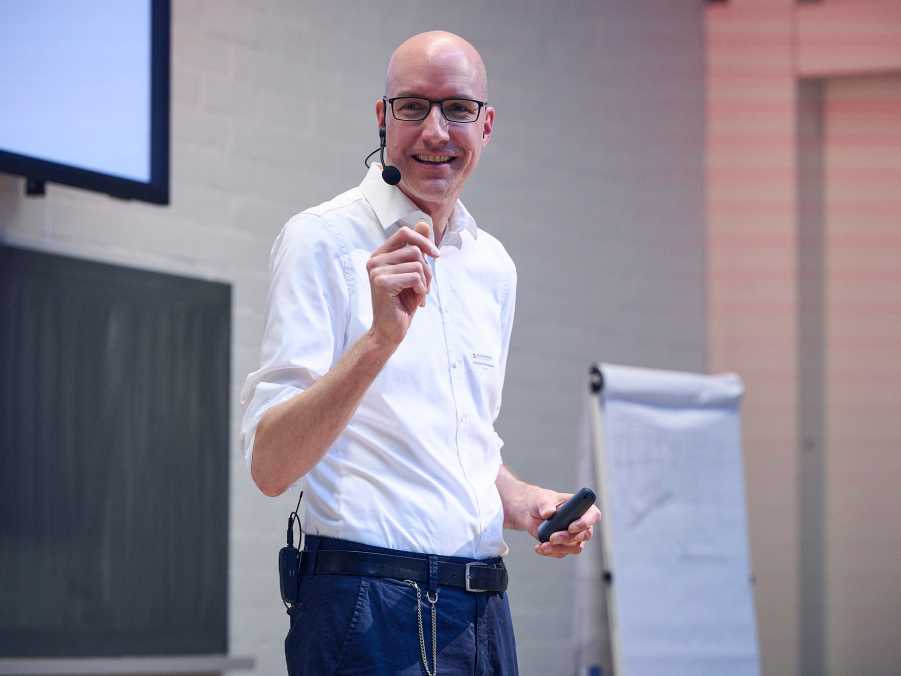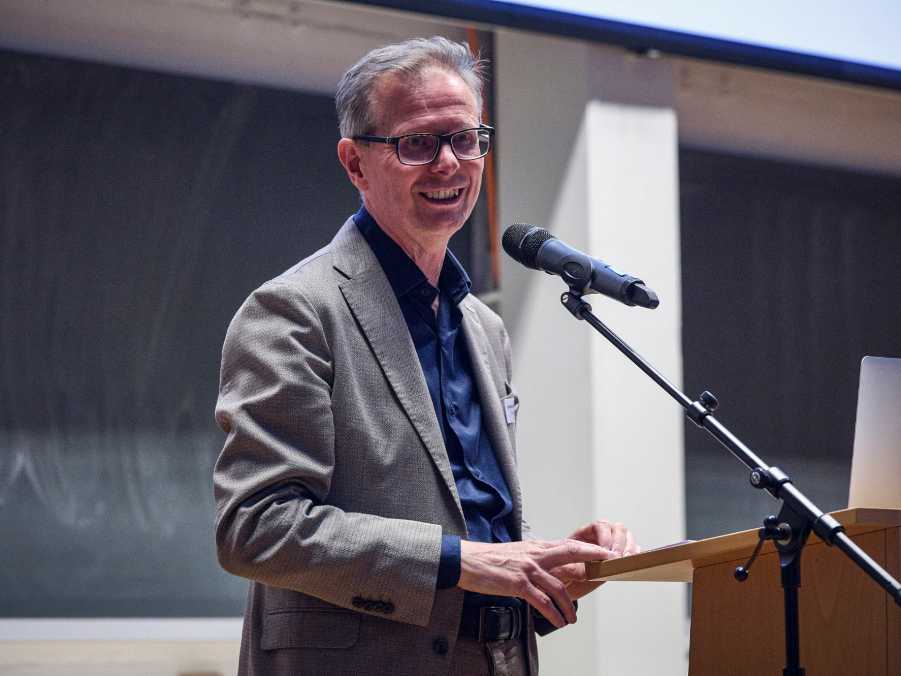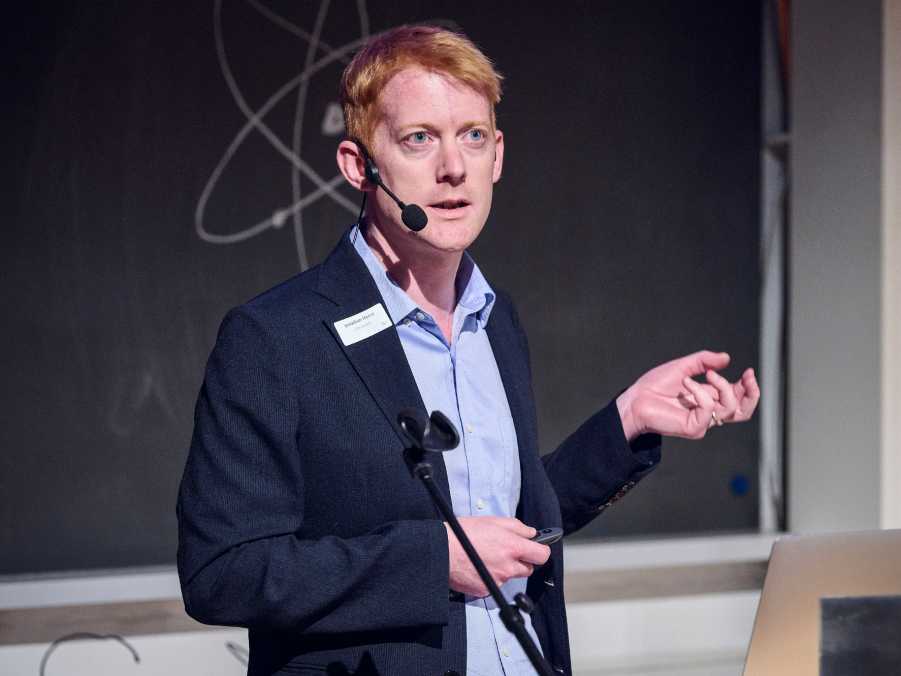The exhibit around the trap
The project that led to the present exhibit has a long history, with conversations between the Department of Physics at ETH Zurich and Technorama dating back to 2018. Once Technorama confirmed its interest, Home and members of his group sat down to figure out what it would take to build a suitable ion trap; the group secured funding from ETH and from the Swiss National Science Foundation, and they put together a team including engineer Ilia Sergachev and postdoctoral researcher Natascha Hedrich. The ion trap was delivered to Technorama in late 2021; testing of the apparatus on site, including early visitors' feedback, took place throughout 2022.
The Technorama exhibit "Seeing atoms" stimulates visitors to cast a deeper gaze at all the matter that surrounds us through interactive activities that follow the ion trap in its transparent box. For example, visitors are encouraged to measure the lifetime of a barium ion's dark excited state by counting for how many seconds an ion remains dark before becoming visible again. Thanks to a cloud chamber, visitors can also see the tracks left by electrically charged particles such as protons and muons as they fly through the Technorama building. At the end of the exhibit, visitors are encouraged to share their thoughts by leaving sticky notes on a wall.
In his speech, Dissertori said that he hopes this opportunity to see atoms sparks further interest in physics and makes visitors eager to ask more questions. Scanning the feedback wall, it seems that this is already happening: a sticky note written by a visitor reads, "Since when are there atoms?" – a beautiful question that calls for more fascinating physics.





